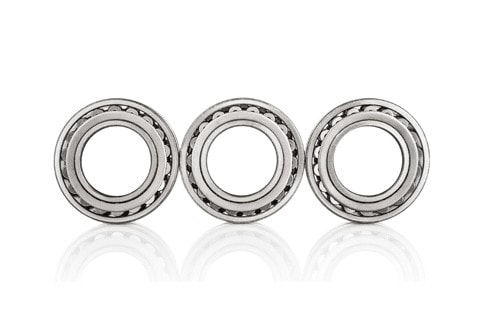Facts About Volution Bearing Uncovered
All About Volution Bearing
Table of ContentsAll about Volution BearingAbout Volution Bearing10 Simple Techniques For Volution BearingSome Known Details About Volution Bearing
An axial (or drive) bearing tons is when pressure is identical to the axis of the shaft. A radial bearing tons is when force is vertical to the shaft. After that a combination bearing load is when parallel and vertical forces produce an angular pressure about the shaft. Sphere bearings are developed with spherical spheres and can disperse loads over a medium-sized surface area.Below is a fast recommendation for the kind of bearing load and the finest sphere bearing for the job: Radial (vertical to the shaft) and light loads: Select radial ball bearings (likewise referred to as deep groove sphere bearings). Radial bearings are several of the most usual kinds of bearings on the marketplace.
Roller bearings are created with round rollers that can distribute loads over a bigger surface location than sphere bearings. Below is a fast reference for the kind of bearing load and the ideal roller bearing for the work: Radial (vertical to the shaft) tons: Select basic round roller bearings Axial (propelled) (parallel to the shaft) loads: Select round thrust bearings Incorporated, both radial and axial, loads: Select a taper roller bearing The rotational rate of your application is the next aspect to look at when choosing a bearing.
They perform far better at greater speeds and offer a higher speed range than roller bearings. One reason is that the get in touch with between the rolling aspect and the raceways in a round bearing is a factor as opposed to a line of call, like in roller bearings. Since rolling components press into the raceway as they roll over the surface area, there is a lot less surface area deformation happening in the point lots from ball bearings.
6 Easy Facts About Volution Bearing Described

If this takes place, an easy and typical option is to change the sphere bearing product from steel to ceramic. This maintains the bearing dimension the exact same yet supplies roughly a 25% higher rate ranking. Considering that ceramic product is lighter than steel, ceramic rounds produce much less centrifugal pressure for any given rate.
One reason is that the rounds are smaller sized and smaller balls evaluate less and generate less centrifugal pressure when rotating. Angular contact bearings also have an integrated preload on the bearings which works with centrifugal forces to appropriately roll the rounds in the bearing. If you are developing a high-speed application, after that you'll want a high-precision bearing, generally within the ABEC 7 precision class.
Volution Bearing for Beginners
High precision bearings are reputable for applications that go quick due to the fact that they make sure excellent ball and raceway interaction.
Some applications, like reducing tool spindles, will just permit a little variance to occur on its revolving components. If you are engineering an application such as this, after that choose a high precision bearing due to the fact that it will certainly produce smaller sized system runouts because of the limited resistances the bearing was manufactured to. Birthing rigidity is the resistance to the pressure that creates the shaft to drift from its axis and plays an essential duty in decreasing shaft Homepage runout.

When the angular get in touch with bearings are installed, the countered is removed which creates the rounds to push into the raceway with no outdoors application force. This is called preloading and the process raises birthing rigidness also prior to the bearing sees any kind of application pressures. Recognizing your bearing lubrication requirements is essential for choosing the best bearings and requires to be thought about early in an application design.
Getting My Volution Bearing To Work
Lubrication creates a movie of oil in between the rolling component and the bearing raceway that helps stop friction and overheating. The most typical kind of lubrication is oil, which is composed of an oil with a thickening representative. The thickening agent keeps the oil in position, so it won't leave the bearing.
After the rolling element goes by, the oil and thickening agent join back with each other. For high-speed applications, understanding the rate at which the oil and thickener can divide and rejoin is essential. This is called the application or bearing n * dm value. Before you select an oil, you need to find your applications ndm value.
Contrast your ndm worth to the grease's max speed worth, situated on the datasheet. If your n * dm worth is greater than the grease max speed worth on the datasheet, then the grease won't have the ability to offer enough lubrication and early failure will occur. One more lubrication choice for high-speed applications are oil haze systems which blend oil with compressed air and afterwards inject it into the bearing raceway at metered intervals.